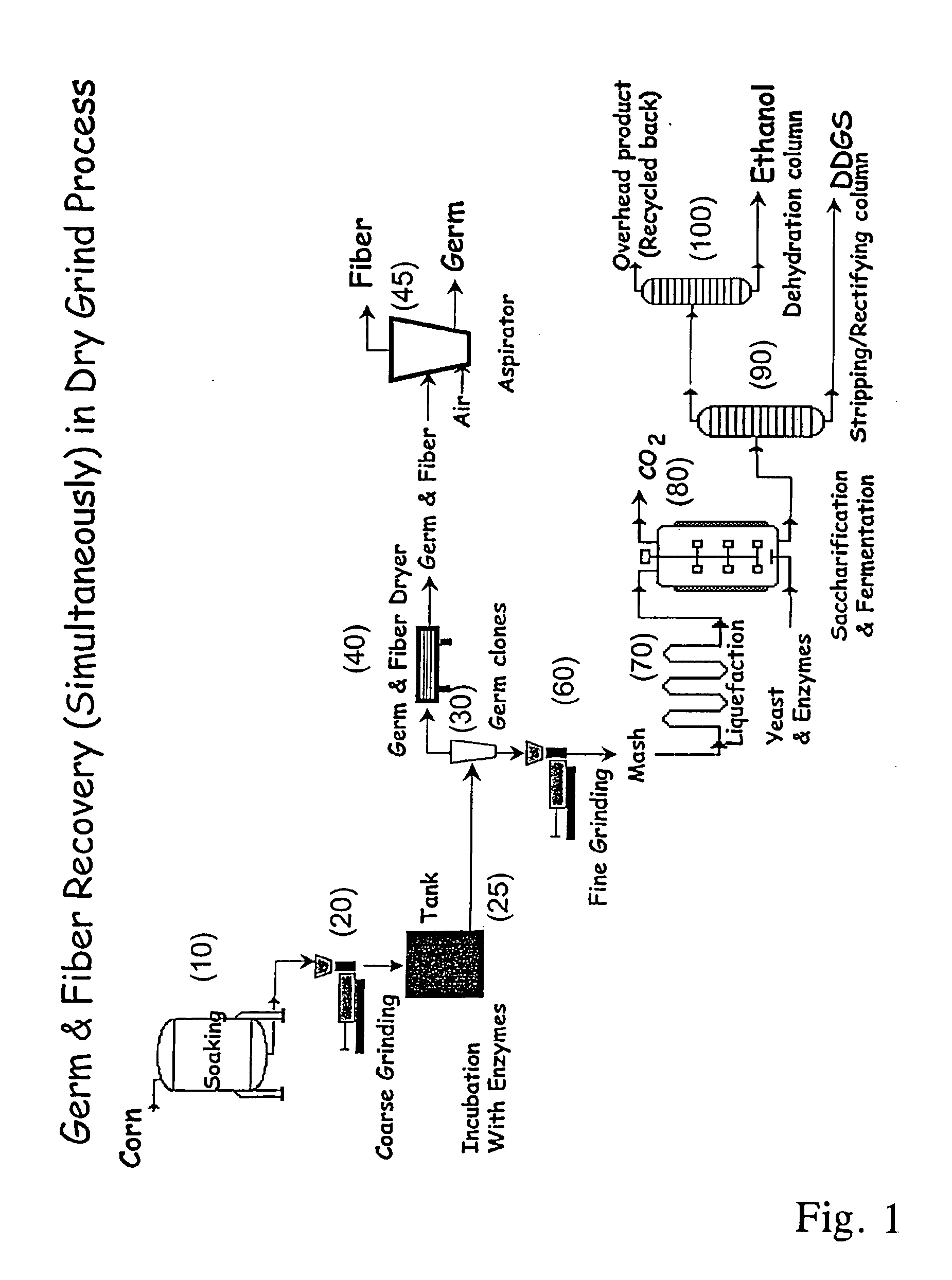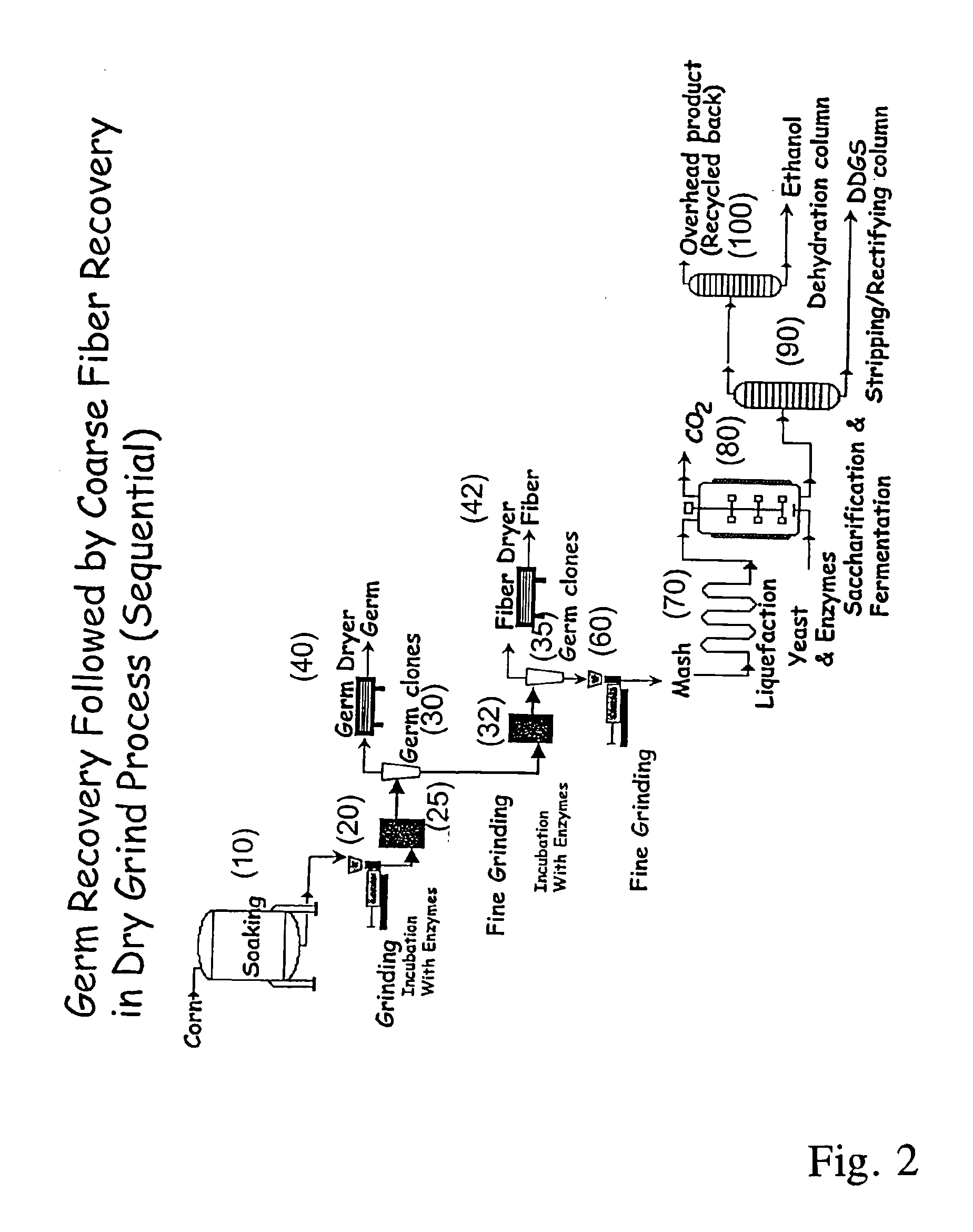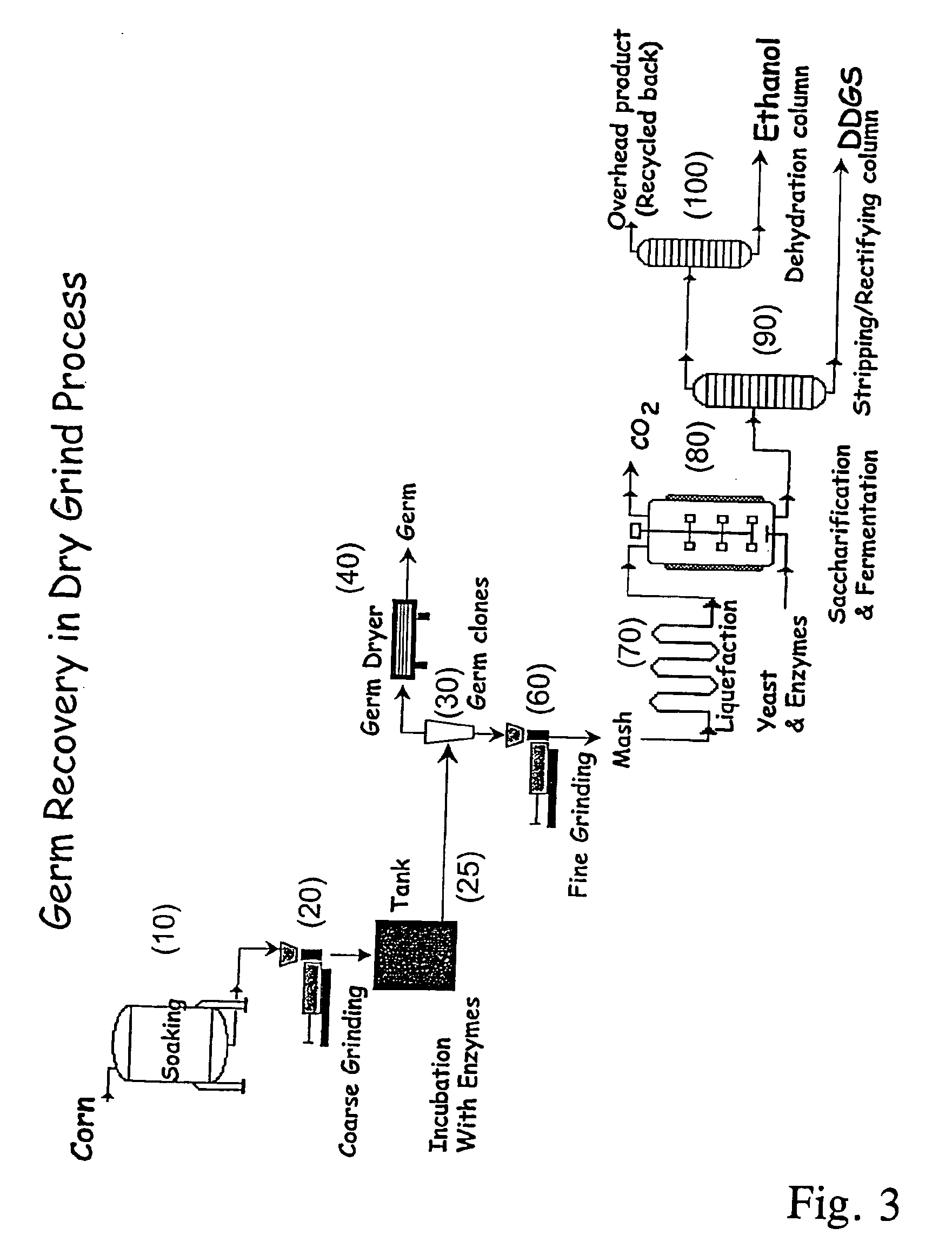Processes for recovery of corn germ and optionally corn coarse fiber (pericarp)
a technology of corn coarse fiber and corn germ, which is applied in the field of recovery of corn coarse fiber and optionally corn coarse fiber (pericarp) from corn, can solve the problems of difficult economic justification of operating dry-grind ethanol plants and higher net corn cos
- Summary
- Abstract
- Description
- Claims
- Application Information
AI Technical Summary
Benefits of technology
Problems solved by technology
Method used
Image
Examples
examples
[0057]Experiment 1: We conducted experiments in which we surprisingly recovered the germ and fiber using an amylase with high native starch activity (the preparation was a commercial betaglucanase). After soaking for 6 hr in water and coarse grinding, the slurry was incubated with the enzyme preparation (50 mg / 100 g of corn) for 2 hrs at 45-48° C. with no additional starch added, pH 5.0. The Baume of the slurry was approximately 9. The germ floated very well and a high yield of the germ was easily recovered. Additional experimental results showed that other enzymes could also be used to increase the specific gravity of the slurry to improve separations of coproducts.
[0058]
GermSoakInitialAddAddFinalYieldTimeBeStarchEnz.Be(%)12 hrs3.8YesNo8.55.90 6 hrs3.6NoYes9.06.57b-Glucanase 6 hrs3.8NoYes9.820.52*b-Glucanase 4 hrs3NoYes9.06.07Protease 6 hrs3.8NoYes9.26.2b-Glucanase*Includes fiber with germ
[0059]The processes described herein of using enzymes to hydrolyze components present in the ...
PUM
 Login to View More
Login to View More Abstract
Description
Claims
Application Information
 Login to View More
Login to View More - R&D
- Intellectual Property
- Life Sciences
- Materials
- Tech Scout
- Unparalleled Data Quality
- Higher Quality Content
- 60% Fewer Hallucinations
Browse by: Latest US Patents, China's latest patents, Technical Efficacy Thesaurus, Application Domain, Technology Topic, Popular Technical Reports.
© 2025 PatSnap. All rights reserved.Legal|Privacy policy|Modern Slavery Act Transparency Statement|Sitemap|About US| Contact US: help@patsnap.com



